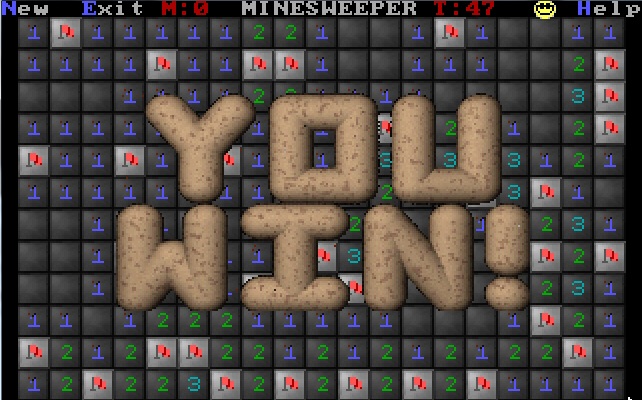
Minesweeper
MineSweeper
- Year1996
- StrategyFlag Mines
- PlatformDOS || MS-DOS
Minesweeper - Game Overview
Minesweeper was written for DOS in 1996 by David Faria.
Minesweeper is a fast paced puzzle game. A field of squares is laid out before you. Beneath a set number of these squares lies a land mine. Your task is to mark off these mines and prevent them from detonating. You can accomplish this by uncovering select squares. If no mine lies beneath it, then a number appears. This is the number of mines (from 1 to 8) surrounding that square. If no mines lies around it, then those eight squares are automatically uncovered. If a mine lies beneath the uncovered square, then it detonates and the game is over. You must mark each square in which you believe a mine lies with a flag. The object of the game is to mark each mine on the field with a flag in the shortest time possible.
Game is 12x19 with 35 mines but you can choose from 20 to 99 mines. You must flag all mines to win. Highscore saves best 10 scores, and your score is 500 less your time multiplied by the number of mines. If you get over 1400 points you play a Bonus level - where bombs drop from the sky and bounce off the sides of the screen window and you must click on them before they hit your building. You get 10 points for each bomb stopped added to your score. When you set a Highscore the game goes crazy for several minutes, congratulating you and letting you enter your name. It shows animations such as putting a white flag on a mine and giving you a 'thumbs up', followed by game credits where Faria thanks himself more than a dozen times and provides a recipe for macaroni!
Version History
A list of all known versions sorted by platform then version. Email admin@ if you have more! See the Downloads section for available files.
| DOS | 1.0 |
Pictures
Screenshots are sorted by platform then version.
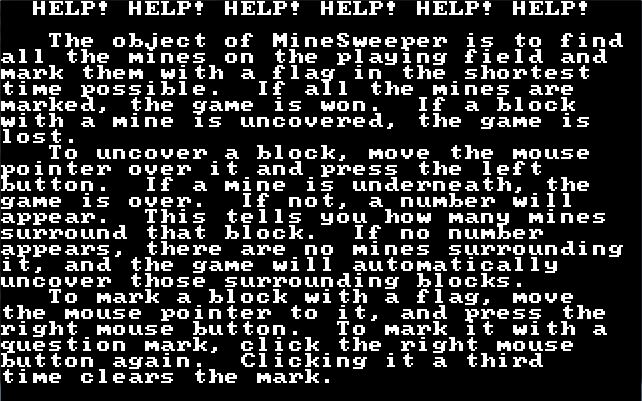
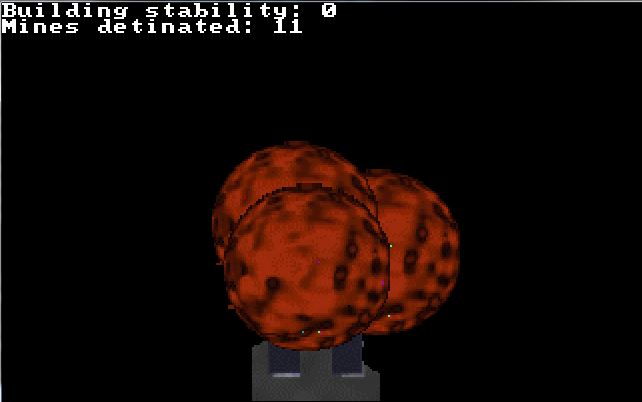
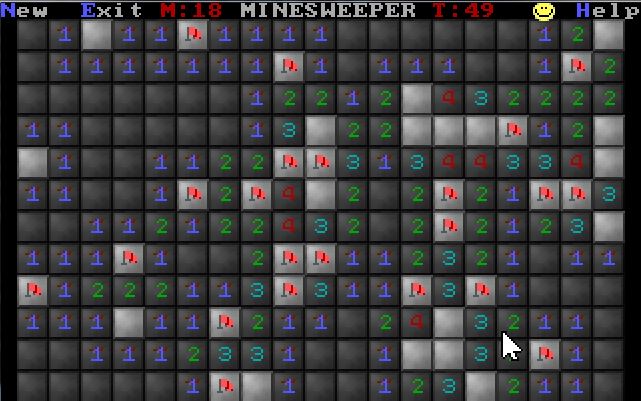
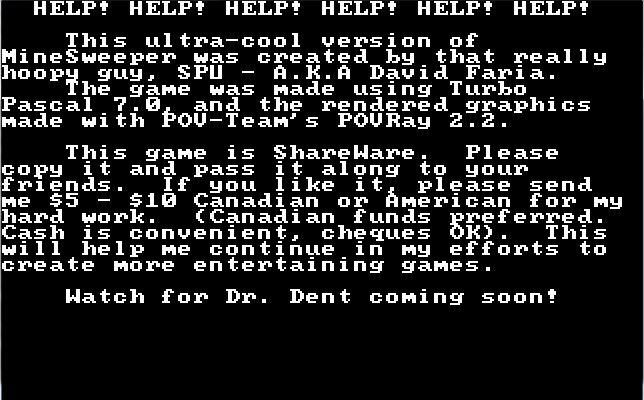
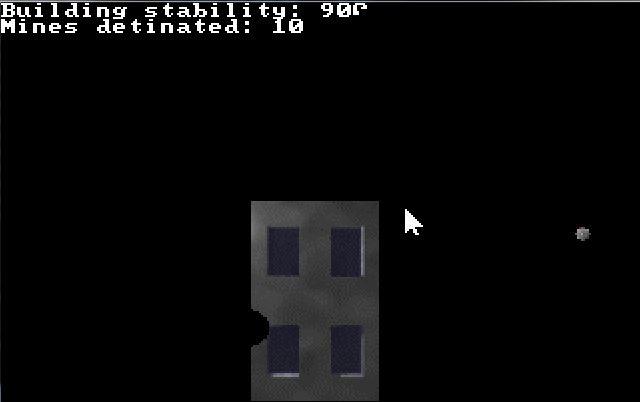

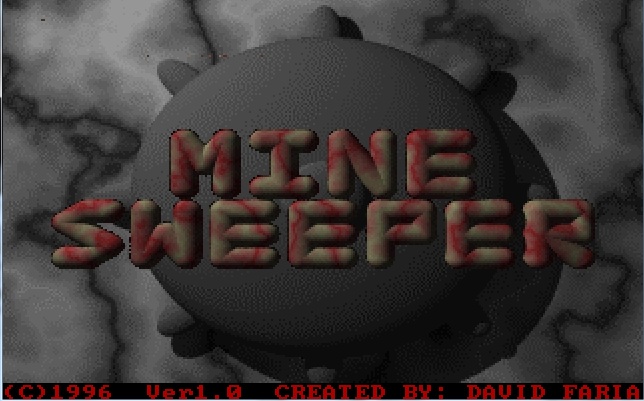
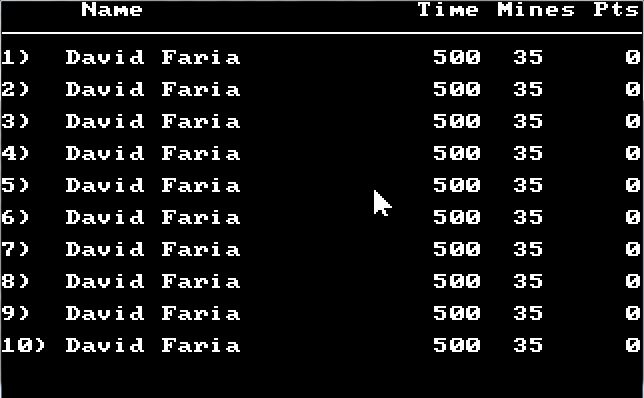
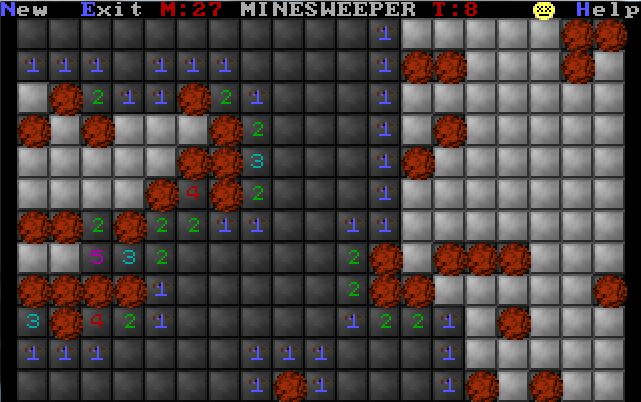
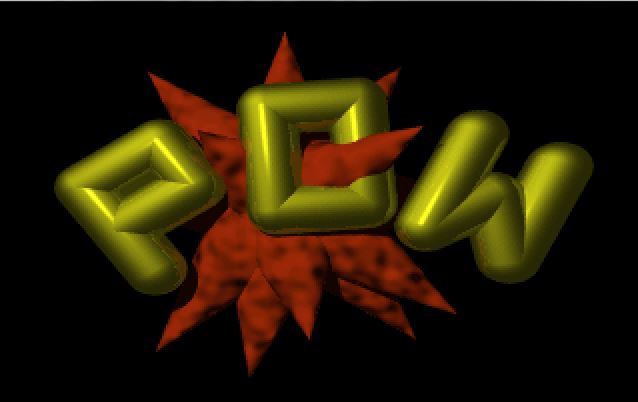

Downloads
Versions are listed by platform, version, year, earliest known date and source of the date information.
| DOS | 1.0 | 1996 | 1996-03-16 | Timestamp |
|
Credits
People and companies are listed by platform, version, name, role and source of the information.
| DOS | 1.0 |
|
Game Links
Dead sites are often available at archive.org.
No links found.Entity Links
Dead sites are often available at archive.org.
- ohmygodmyarmfelloff.mcluhan.toronto.edu/~faria